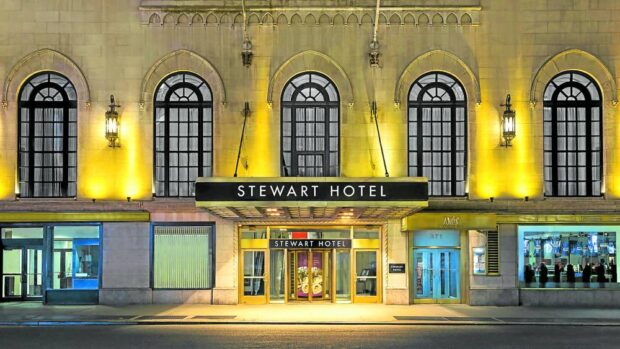
Investors and project team need a unified vision of the hotel’s offerings to the target market (HTTPS://WWW.STEWARTHOTELNYC.COM)
Investors certainly see the Philippines, a tropical paradise with tourist-friendly people, as a lucrative location for hotel development.
Its attractiveness is undeniable as you get to enhance tourists’ experiences with creative space designs that enable meaningful interactions while reaping lucrative returns from a steady income. The Philippine tourism sector is also poised for a postpandemic resurgence, while the government is eyeing 12 million international tourist arrivals yearly by 2028. Hotel development thus beckons not only to major hospitality developers, but also to entrepreneurs seeking business opportunities on a tropical island.
But hotel investment isn’t as simple as finding any lot and building the maximum number of rooms allowed. Like any investment, the foundation is dependent on gathering information and strategic planning.
Bypassing a strategic approach can result in unfulfilled expectations and lackluster financial results. The key to overcoming these difficulties is an intricate interplay of concept, feasibility, and design.
CONCEPT
Every project starts with an idea. The investors and project team need a unified vision of the hotel’s offerings to the target market, with a strong focus on its revenue potential. Selecting the location as well as strategizing room configurations, design, and services must undergo an intricate process to actualize the hotel’s revenue potential.
Should an investor overestimate the number of rooms, it’s likely that he or she has already unwittingly set up the hotel for potentially years of underperformance. A comprehensive and expert-guided concept design will serve as a blueprint for continued success.
FEASIBILITY
A feasibility study, usually done by external consultants, shows if a proposal is a sustainable, profitable business model. Knowing a hotel’s viability relating to market, location, costs, and financing can inform investors if the proposal is worth pursuing or not.
Local hotel supply, demand, and competitors should be studied so occupancy levels and hotel rates can be projected. Combined with estimates for construction of the concept, the owner can ascertain a clearer picture of the return on investment and judge the project accordingly.
DESIGN
Some hotel owners shared that the budget often largely guides design.
Designs are vital for brand identity, functionality, efficiency, and hotel profitability. Thoughtful designs can offer competitive advantages to a hotel and improve guest experience, and as such, investors and the design team must be careful when they are working on them.
Given the established track records of global hotel operators with design standards, adopting international design standards and ratios for hotel design will help maximize the value of the property sale in the future.
While it’s tempting to get the hotel done immediately to start getting returns, investors must be cautious with their decisions since the competitive nature of the hotel business requires them to be intentional with every aspect of the project. Its complexity might even overwhelm investors and make them overlook the importance of concept, feasibility, and design.
Investors should start moving these three to the front seat because once they take the wheel, embracing the Pareto Principle, they are the 20 percent that drive 80 percent of a hotel’s success.
The author holds licenses as a real estate appraiser and broker. He is a manager for Hotels, Tourism, and Leisure at Leechiu Property Consultants Inc., the country’s premier real estate advisory firm. For more information, visit www.leechiu.com

